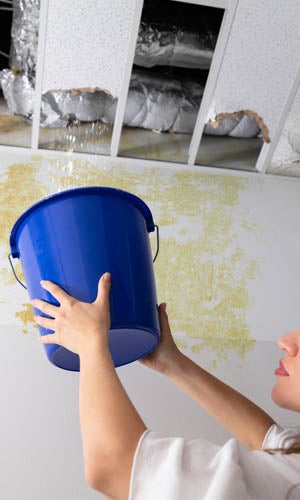6 Ways to Spot Covert Water Line Leaks Efficiently
6 Ways to Spot Covert Water Line Leaks Efficiently
Blog Article
Right here in the next paragraph you can get more really good data regarding Locating water leaks.

Early discovery of leaking water lines can reduce a potential catastrophe. Some small water leaks may not be visible.
1. Analyze the Water Meter
Every house has a water meter. Examining it is a guaranteed way that aids you find leaks. For beginners, turn off all the water resources. Make certain no one will purge, make use of the tap, shower, run the washing maker or dishwashing machine. From there, go to the meter and watch if it will transform. Since nobody is utilizing it, there need to be no motions. If it relocates, that shows a fast-moving leak. If you spot no modifications, wait a hr or two and check back once more. This means you might have a slow leak that might also be below ground.
2. Inspect Water Intake
If you spot unexpected modifications, regardless of your consumption being the very same, it implies that you have leakages in your plumbing system. An abrupt spike in your expense indicates a fast-moving leakage.
On the other hand, a constant boost monthly, despite having the same routines, reveals you have a sluggish leakage that's likewise gradually intensifying. Call a plumber to completely examine your residential or commercial property, particularly if you feel a cozy location on your flooring with piping beneath.
3. Do a Food Coloring Examination
When it comes to water usage, 30% comes from bathrooms. Test to see if they are running effectively. Drop specks of food shade in the container as well as wait 10 minutes. If the shade in some way infiltrates your bowl during that time without flushing, there's a leakage between the tank and also bowl.
4. Asses Outside Lines
Don't forget to examine your outside water lines too. Needs to water leak out of the connection, you have a loosened rubber gasket. One tiny leakage can squander lots of water and surge your water bill.
5. Examine the situation as well as evaluate
Property owners need to make it a practice to inspect under the sink counters and also even inside cupboards for any type of bad odor or mold and mildew development. These two red flags show a leakage so punctual interest is needed. Doing routine evaluations, even bi-annually, can conserve you from a significant issue.
If you understand your home is currently old, keep a watchful eye on your heating units, hose pipes, pipelines etc. Look for discolorations and also damaging as many pipelines as well as devices have a life expectancy. They will certainly also naturally degrade due to deterioration. Do not wait for it to intensify if you believe dripping water lines in your plumbing system. Call a professional plumber today so you do not wind up with a terrible mess in your home.
Early detection of dripping water lines can reduce a possible catastrophe. Some little water leaks may not be noticeable. Inspecting it is a surefire method that aids you discover leakages. One little leakage can lose heaps of water and increase your water costs.
If you presume leaking water lines in your plumbing system, do not wait for it to intensify.
WARNING SIGNS OF WATER LEAKAGE BEHIND THE WALL
PERSISTENT MUSTY ODORS
As water slowly drips from a leaky pipe inside the wall, flooring and sheetrock stay damp and develop an odor similar to wet cardboard. It generates a musty smell that can help you find hidden leaks.
MOLD IN UNUSUAL AREAS
Mold usually grows in wet areas like kitchens, baths and laundry rooms. If you spot the stuff on walls or baseboards in other rooms of the house, it’s a good indicator of undetected water leaks.
STAINS THAT GROW
When mold thrives around a leaky pipe, it sometimes takes hold on the inside surface of the affected wall. A growing stain on otherwise clean sheetrock is often your sign of a hidden plumbing problem.
PEELING OR BUBBLING WALLPAPER / PAINT
This clue is easy to miss in rooms that don’t get much use. When you see wallpaper separating along seams or paint bubbling or flaking off the wall, blame sheetrock that stays wet because of an undetected leak.
BUCKLED CEILINGS AND STAINED FLOORS
If ceilings or floors in bathrooms, kitchens or laundry areas develop structural problems, don’t rule out constant damp inside the walls. Wet sheetrock can affect adjacent framing, flooring and ceilings.
https://www.servicemasterbyzaba.com/blog/how-to-detect-water-leakage-in-walls/

We had been introduced to that editorial about Hacks to detect leaks from someone on another web blog. For those who liked our blog post if you please be sure to pass it around. Bless you for your time. Visit us again soon.
Visit Our Site Report this page